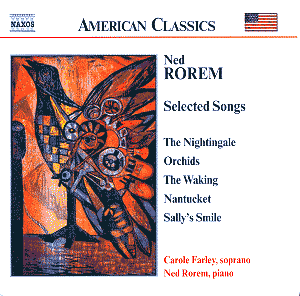 Composer: Jean Sibelius
Composer: Jean Sibelius
Works: The Seven Symphonies and a selection of the tone poems
Performers: Berlin Symphony Orchestra, Kurt Sanderling
Recording: Various dates from 1970 to 1977
Label: Brilliant Classics
Jean Sibelius, the Finnish composer whose works resonate with the elemental forces of nature and the human spirit, has left an indelible mark on the orchestral landscape. His symphonies and tone poems encapsulate a range of emotional expressions, from the sublime to the starkly dramatic. The Brilliant Classics box set presents a complete collection of Sibelius’s seven symphonies alongside several notable tone poems, all conducted by Kurt Sanderling with the Berlin Symphony Orchestra. This compilation not only showcases Sibelius’s unique voice but also invites scrutiny of Sanderling’s interpretations, which are steeped in historical significance and musical detail.
Sanderling’s interpretations of Sibelius are marked by an acute attention to detail, a quality that emerged from his rich background in Russian orchestral traditions. The First Symphony, recorded in January 1976, unfolds with vigorous string surges and a vivid brass palette, encapsulating the youthful exuberance of Sibelius’s early style. The third movement’s tension is expertly managed, revealing Sanderling’s ability to navigate the symphonic architecture while maintaining a sense of lyrical flow. However, the finale’s somewhat clipped execution diminishes the overall impact, leaving the listener wishing for a more robust conclusion that matches the emotional weight of the preceding movements.
The Second Symphony, recorded in September 1974, showcases a more mature Sibelius. Here, Sanderling’s craftsmanship shines through, molding phrases with a sculptor’s precision. The pizzicato in the first movement is executed with delightful clarity, and the second’s tension is finely calibrated. Yet, as the symphony progresses, a hint of fatigue becomes apparent, particularly in the finale, where the music’s expansive aspirations are tempered by a lack of momentum that feels at odds with its grand thematic material.
Transitioning to the Third and Fourth Symphonies, one observes a distinct shift in character. The Third Symphony, composed between 1904 and 1907, is infused with a chill flame, a quality that Sanderling captures adeptly through sharply accented orchestral colors. The Fourth Symphony’s somber beauty is rendered with a gruff, volcanic romance that starkly contrasts with the more lyrical passages, demonstrating Sanderling’s ability to evoke the stark landscapes of Sibelius’s Finland. The recording’s naturalness and power serve to enhance the symphonic grandeur, providing a compelling listening experience.
The Fifth Symphony, recorded in December 1971, highlights Sanderling’s affinity for Sibelius’s hymn-like writing. The strings’ rich tones and the ethereal woodwind passages coalesce into an organic sound that invites repeated hearings. Here, the intricate interplay of motifs is rendered with a clarity that allows new details to emerge, particularly in the second movement’s serene yet turbulent dialogue. The finale, with its epic horn cradle-song, stands as a testament to Sanderling’s interpretative prowess, marrying emotional depth with structural integrity.
Sanderling’s approach to the Sixth Symphony reveals his mastery of contrasting textures, where the orchestration unfolds with a cool, measured pace that reflects the composer’s own introspection. The ingeniously layered flute and string contributions are particularly noteworthy, capturing the essence of Sibelius’s Nordic landscape. However, the Seventh Symphony, recorded in early 1974, falls short of its dramatic potential. Sanderling’s meticulous detail-oriented style, while admirable, yields a performance that lacks the necessary tension and urgency, resulting in a tepid interpretation that does not convey the work’s inherent power.
The sound quality across this box set is commendable, with each disc retaining the warmth and clarity characteristic of mid-20th-century recordings. The engineering captures the orchestral textures effectively, making for a satisfying auditory experience, even if at times the recordings exhibit the limitations typical of their era. Comparatively, while other interpretations, such as those by Berglund or Vänskä, may assert themselves with a more vigorous approach, Sanderling’s readings are imbued with a thoughtful restraint that allows Sibelius’s subtleties to resonate fully.
This Brilliant Classics box set stands as a valuable addition for both newcomers and seasoned Sibelius enthusiasts alike. Sanderling’s interpretations reveal a nuanced understanding of Sibelius’s music, marked by a commitment to detail and a respect for the composer’s Nordic roots. The collection encapsulates a breadth of emotional experiences, offering insights into Sibelius’s evolving style while also reflecting Sanderling’s unique interpretative vision. For those willing to engage with a more measured approach, this set provides a rewarding listening journey through the landscapes crafted by one of the 20th century’s most significant composers.



